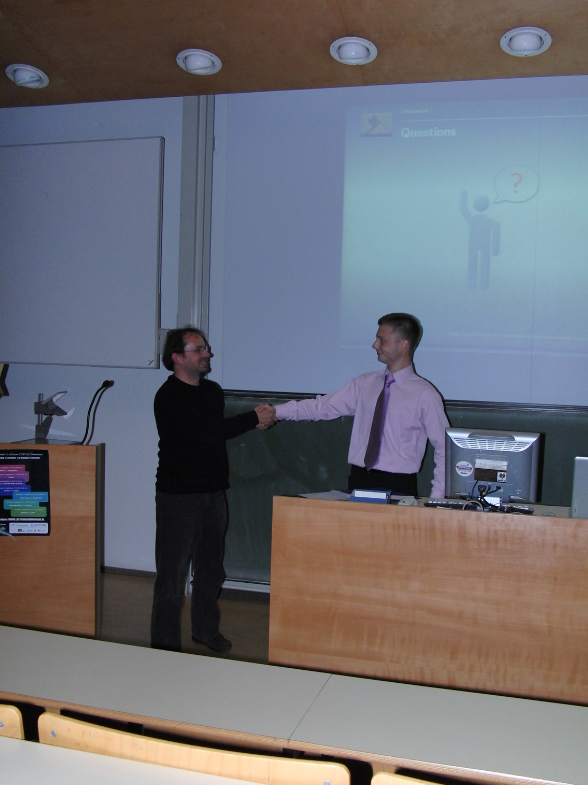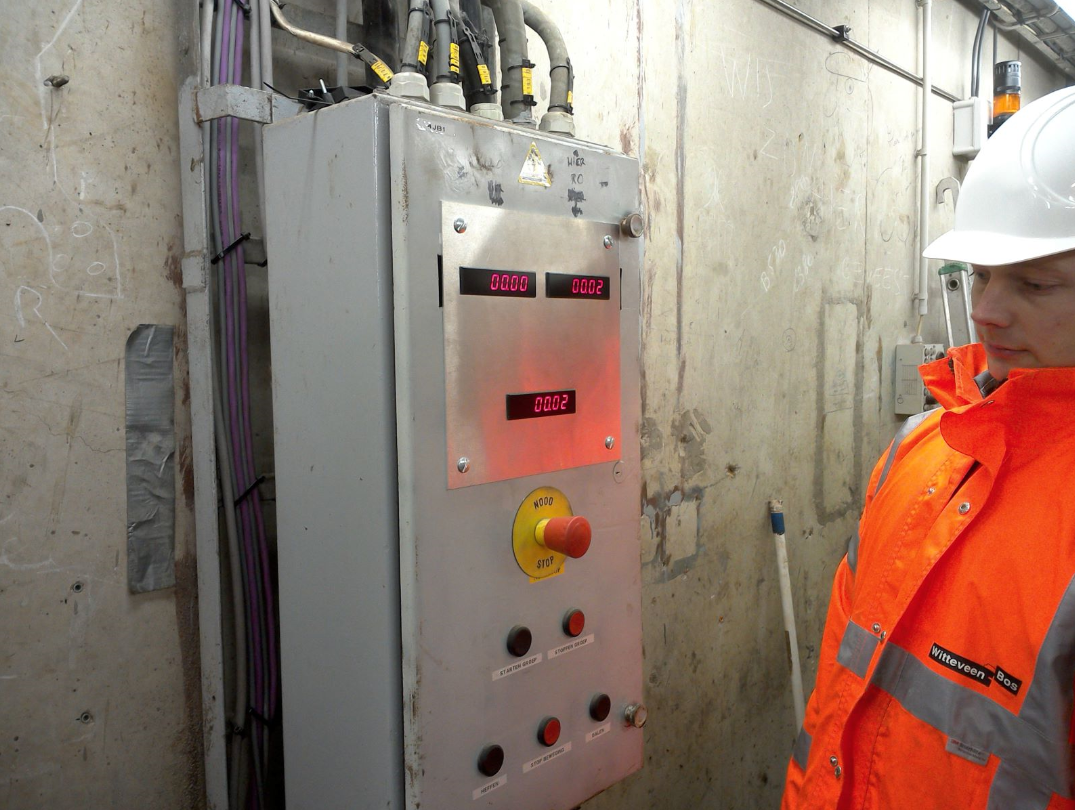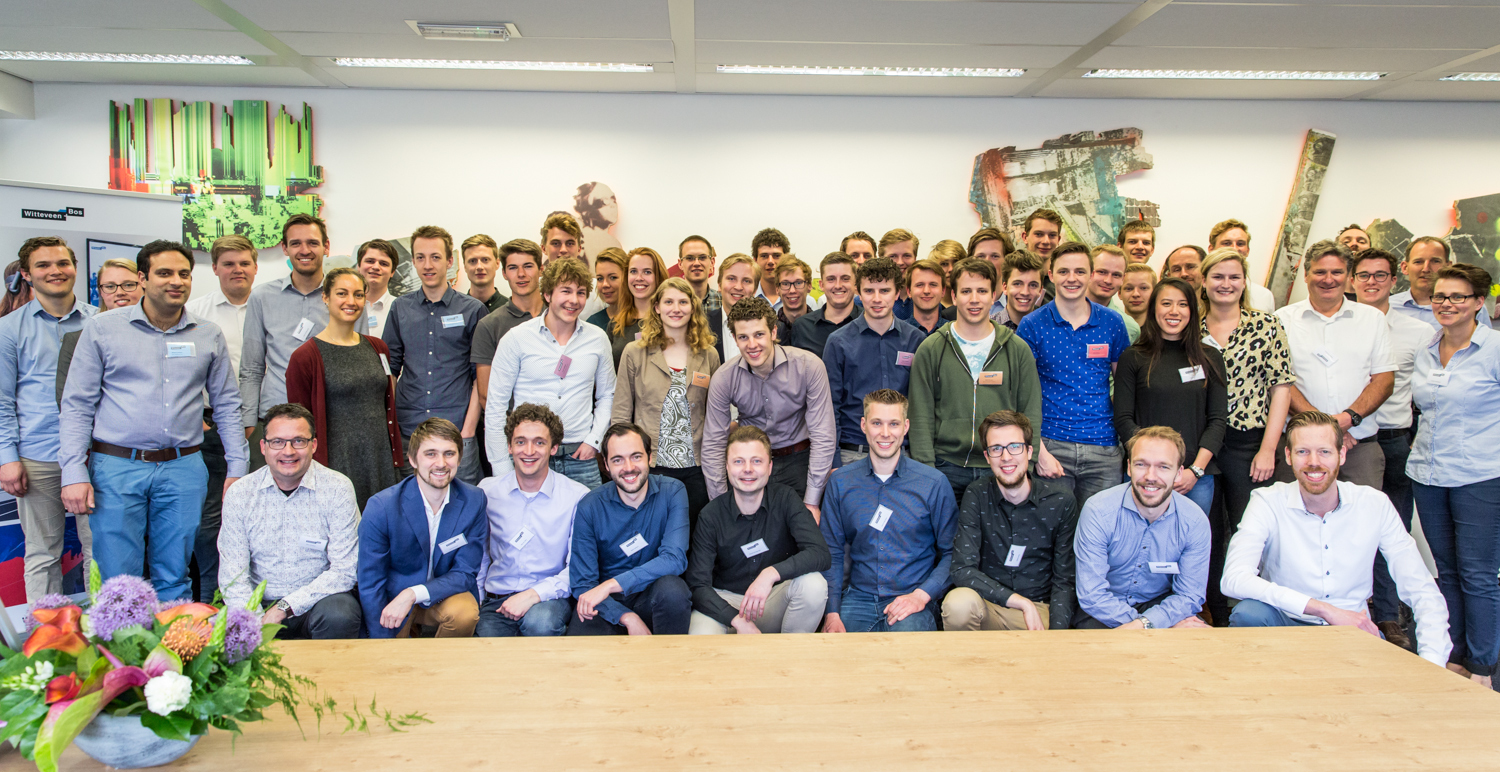Afterlife: Harmen Droogendijk
In the rubric ‘Afterlife’, alumni in Electrical Engineering from the University of Twente look back at their time as a student. They take us along their study time and subsequent career path and share what defined their period at Scintilla and the University of Twente. In this Vonk’s edition: Harmen Droogendijk.
Study period (2003-2009)
About 15 years ago, I started my study electrical engineering at the University of Twente together with approximately 80 other students. It were my first days at the university campus and it was my first meeting with the study association Scintilla as well. I still remember the camp during the introduction week near Enter, the beautiful games we had outside and also my first Cantus-experience. Those memories also came back vividly this summer, when my oldest daughter (8 years old) went to the same camp site for her first sports camp.
During my bachelor period in the former Hogekamp-building, I spent more and more time with friends in the Scintilla-chamber in the basement of the building, both study-related and social. It was in 2005 when I started with my first committee within Scintilla - the Symposium committee - with the role as officer external affairs. Since it was a lustrum that year, we aimed for a great symposium based on parallel sessions with a goal of 10 speakers. Ultimately, we succeeded and we realized a very nice symposium entitled “Security on the Edge”.
Figure 1: Meeting at the start of the 74th board of E.T.S.V. Scintilla
Shortly after the symposium, I was asked by Hubert Flisijn whether I would like to be candidate for the new board of E.T.S.V. Scintilla. I decided to accept this invitation and I joined the 74th board of E.T.S.V. Scintilla within the role of secretary for the period of March 2006 till October 2006. Since in those days boards were installed for a period of 6 months, I was subsequently also part (as secretary) of the 75th board of E.T.S.V. Scintilla in the period from October 2006 till March 2007. Both periods were really enjoyable, ranging from activities like board meetings with breakfast, constitutional drinks, organizing activities, meetings with sister-boards in Eindhoven and Delft, and so on. When I left the board after one year I went back to my study again and luckily, my bachelor study was almost finished. The only part that was missing was the “IOO” (Dutch abbreviation for “Individuele OnderzoeksOpdracht”). During the past years I discovered that I liked multidisciplinary assignments a lot, which were preferably related to physics. Therefore, I went to the former TST-group (Transducers Science and Technology) where I found an interesting assignment on characterization of a micro Coriolis mass flow sensor (supervisor: Remco Wiegerink). In the summer of 2007, I successfully fulfilled the assignment and decided that this assignment paved my way.
My master in electrical engineering started in 2007 and focused on microsystems. In a two-year period I followed several courses on mechanics, physics, system-on-a-chip design, MEMS (micro-electro-mechanical systems) and so on. I looked for an internship in the accompanying field and preferably in a company that represents working in the Netherlands. Therefore, I did my internship in the end of 2008 at the company Bronkhorst High-tech in Ruurlo, where I worked on modeling of the IQ+-flow sensor. In the beginning of 2009 I started with my graduation assignment, which was again within the TST-group by supervisor Remco Wiegerink. This time, I worked on the design and fabrication of a sensor for gravitational acceleration. The ultimate goal was to realize an accelerometer that was sensitive in such a way, that it could measure gravity gradients, being a mean for soil composition and therefore e.g. oil exploration. After a great time on the 7th floor of the former Hogekamp-building and in the ‘old’ cleanroom I successfully graduated in room Hogekamp T4, with drinks afterwards in the “Tombe”. Now, I could sit back for some weeks and prepare for my first job: PhD!

Figure 2: Graduation ceremony in the Hogekamp-building (room T4)
PhD (2009-2014)
In September 2009 I started my PhD in the former TST-group under supervision of professor Gijs Krijnen. The assignment for my PhD was the optimization of biomimetic flow sensors by means of nonlinear techniques within the BioEARS-project. BioEARS is an abbreviation for Biomimetic Engineering of ARray Sensors. During the past years, biomimetic hair flow sensors were developed using MEMS technology and a dedicated fabrication in the MESA+ Nanolab. Since these sensors showed a clear functionality with respect to responsivity to air flow and associated directivity, the next step contained improving its functionality by means of nonlinear techniques like parametric amplification and stochastic resonance.
These techniques provided a clear starting point for further research, since I did not only investigate parametric amplification for a MEMS hair flow sensor, but also for a micro Coriolis mass flow sensor and a micromirror. For characterization of the hair sensors, I explored characterization methods using a loudspeaker, a dipole sphere and a standing wave tube. Based on my findings on parametric amplification, I was able to demonstrate the mechanism of EMAM (electromechanical amplitude modulation) on the application of a time-varying spring constant in relationship with a harmonic air flow. I also developed new sensor types from the hair-based flow sensor, namely a hair-based accelerometer and a hair-based gyroscope. Using both models and measurements, I developed a comprehensive model to compare artificial hair sensors to biological hair sensors for flow measurement by means of responsivity, power transfer and impedance matching.
Figure 3: Lecture at the Transducers’ 13 Conference in Barcelona (Spain)
After approximately 4,5 years of working as a PhD-student a lot of exciting research was executed, several sensor models were designed, fabricated in the MESA+ Nanolab and characterized, and lots of results were obtained. My time as a PhD-student was really a great time, not only because of the total number of journal papers (11 in total), but especially because of the nice conferences I was allowed to attend (e.g. in China, Taiwan, USA, Ireland, Spain and France), the combination of design, fabrication and characterization of sensors (theory and practice), and the colleagues I had.
Figure 4: Receiving my PhD from prof. Gijs Krijnen
During my PhD I also successfully attended the educational track “Promovendi voor de klas”, which allowed me to obtain my degree as a physics teacher on high school. In the year of 2012, I followed several courses on didactics, and I had several groups (3rd and 4th year) at the high school Twents Carmel College in Oldenzaal.
Witteveen+Bos (2014-now)
In the last months of my PhD I started to look around for a nice and challenging job. Since I had no intend to leave Twente, I focused my job search on companies within a certain radius from Enschede. During this search, I experienced there were mainly two possibilities: i) stay within the world of high-tech, ii) something new and/or different. Based on the information I received on the various vacancies and possible jobs, it became clear to me that I was actually looking for a job with a multidisciplinary role, the aspect of working in project teams and with a non-technical component (i.e. management and commerce). Therefore, I applied for a vacancy of project engineer on my background in electrical engineering at Witteveen+Bos within the field of infrastructure. During the interviews I had, it quickly became clear that working at Witteveen+Bos would not only comprehend engineering, but also consultancy and management for both small and big (multidisciplinary) projects. I decided to accept the job offer, and started working at Witteveen+Bos as of March 2014.
The first projects I got involved with were the renewal of the locks Keersluis Maassluis and Vlaardinger Driesluizen. These two object were located in places near Rotterdam, and the technical installations of these objects were both old and incompliant with safety regulations. Based on a site visit and design guidelines, we made a final design on the renewal of the electrotechnical and mechanical installations, together with a new climate-system in the control room and other (minor) activities. From this final design, a contract was developed for a tender, in order to contract a contractor for actually carrying out the building activities outside. These projects immediately introduced me into the strong multidisciplinary aspects of projects within Witteveen+Bos, together with working in projects and client contact.

Figure 5: Assessment of (a part of) a bridge control system
At the moment, I have been employed at Witteveen+Bos for about 5 years, and in that time I worked on probably more than 100 projects. Among these projects, there were several huge projects (duration >10 years, cost: >millions of Euro), very small projects (~1 week, cost: few thousand Euro) and everything in between.
Among these huge projects are, for example, the redesign of the A10 at the southside of Amsterdam (project Zuidasdok). In this project, I was involved on the renewal of the control systems of the movable bridges in this highway, together with the nearby rail bridges and lock. Specific questions in this project were the application of the Machinery Directive and the design of the control room building. Another great project to work on was IMPAKT by Rijkswaterstaat. Within that project, we assessed the safety and security of hundreds of bridges, locks and tunnels of Rijkswaterstaat throughout the Netherlands.

Figure 6: Business Experience IMPAKT 2018 at Witteveen+Bos
Currently, the main projects I am working on are the Oosterweel Link in Antwerp (Belgium). In this project, we are working on the design and contract for ‘closing’ the highway ring in Antwerp, which will comprehend the design of seven tunnels. All the tunnel technical installations for these tunnels need to be designed in detail, together with the associated control system, for which I am involved in the project team. At the moment, I am working two days a week in Antwerp together with both Dutch and Belgian colleagues on this project. Next to this project, I am project manager of the rehabilitation of the Ganzensluis near Kampen (client: Provincie Overijssel), which is a very strong multidisciplinary project, not only involving other technical disciplines, but also permits, ecology, etc.
In addition to my project roles as engineer, consultant or project manager, I have been group leader of the group Sensors, Systems and Safety within the business unit Smart Infra Systems since 2017. This groups currently consists of 6 members throughout the Netherlands and even one member in Belgium. This role brings me a (new) challenge on personnel management, education and training, which I like a lot. Due to the variety of locations for both projects and group management, I travel a lot (by train). Luckily, working in the train is often possible, allowing to convert travel time to work time.
One of the great aspects of Witteveen+Bos as a company is the encouragement for entrepreneurship. To illustrate: the job market is not just a responsibility of our HR department, but our employers themselves are encouraged to put effort in this field. For example, many of our employers still have ties with their old student associations. In my case, this represents the contact I have from a professional perspective with E.T.S.V. Scintilla. This year, we organized the Business Experience IMPAKT at our office in Amsterdam. A great example of collaboration between both my colleagues and students.
Personal life
After my period as a student electrical engineering I decided to keep living in Enschede, where I actually still live. Though, some things have changed since 2003. For over 10 years now, I am happily married with my wife and during these years we became parents of four children (2 daughters, 2 sons). In my (spare) free time I play tuba in an orchestra, in which I also have the role of chairman of the board.
